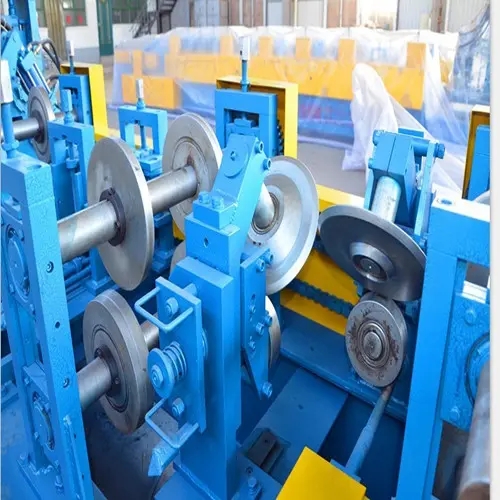
An Overview of Big Span Forming Machines Revolutionizing Structural Engineering
In the realm of structural engineering, the quest for efficiency and innovation has led to the development of advanced machinery that has transformed the fabrication processes of large-scale structures. One such innovation is the big span forming machine, a sophisticated piece of equipment designed for the production of large-span components, primarily used in the construction of bridges, warehouses, and sporting facilities. This article delves into the features, advantages, and applications of big span forming machines, highlighting their significance in modern engineering.
What is a Big Span Forming Machine?
A big span forming machine is an advanced hydraulic or mechanical device that shapes and forms metal sheets or other materials into large components with significant structural integrity. These machines utilize processes such as bending, welding, and rolling to create elements that can span great distances without the need for numerous support structures. Commonly used materials include steel, aluminum, and reinforced plastic, all of which exhibit high strength-to-weight ratios, making them ideal for large-span constructions.
Key Features
The design of big span forming machines typically incorporates several critical features that enhance their performance and versatility. Firstly, they are equipped with programmable control systems that allow for precise adjustments to the shape and dimensions of the components being produced. This programmability ensures that even complex geometries can be achieved with minimal waste and maximum efficiency.
Secondly, big span forming machines often have modular designs that enable them to handle various material sizes and thicknesses. This flexibility is essential for contractors and manufacturers who need to adapt their processes to meet specific project requirements. Additionally, these machines can accommodate a range of forming techniques, which allows for the production of different structural elements, such as beams, girders, and trusses.
Another crucial feature is their hydraulic capabilities, which provide the necessary force to manipulate heavy materials. The use of hydraulic systems facilitates smoother operations, reduces the risk of material deformation, and enhances the overall quality of the final products.
Advantages of Big Span Forming Machines

The introduction of big span forming machines has brought about numerous advantages for the construction and manufacturing industries. One of the most significant benefits is the increased speed of production. Traditional methods often involve time-consuming manual processes, whereas these machines can produce components in a fraction of the time, allowing projects to progress more swiftly.
Moreover, big span forming machines contribute to improved safety on job sites. By automating the forming process, the reliance on manual labor decreases, reducing the likelihood of accidents and injuries associated with heavy lifting and manual handling of materials.
Additionally, these machines enhance the quality and precision of fabricated components. Consistency in manufacturing is vital for structural integrity, and the advanced technology used in big span forming machines ensures that each piece meets strict engineering standards and tolerances.
Applications
The applications of big span forming machines are vast and varied. In the construction sector, they play a crucial role in the fabrication of large structural components for buildings, bridges, and stadiums. These structures often require beams and trusses that can span long distances without compromising stability, making big span forming machines an indispensable tool.
Furthermore, they find applications in the transportation industry, where large components are essential for creating infrastructures like railways and highways. Their ability to efficiently produce large parts also extends to the aerospace and automotive industries, where weight reduction and structural integrity are paramount.
Conclusion
In conclusion, big span forming machines represent a significant advancement in the field of structural engineering and manufacturing. By offering enhanced production speed, improved safety, and high precision, they enable the construction of large-span structures that are not only efficient but also durable. As the demands of modern architecture and infrastructure continue to grow, these machines will undoubtedly play a pivotal role in shaping the future of construction, proving that innovation is the key to overcoming the challenges of modern engineering.